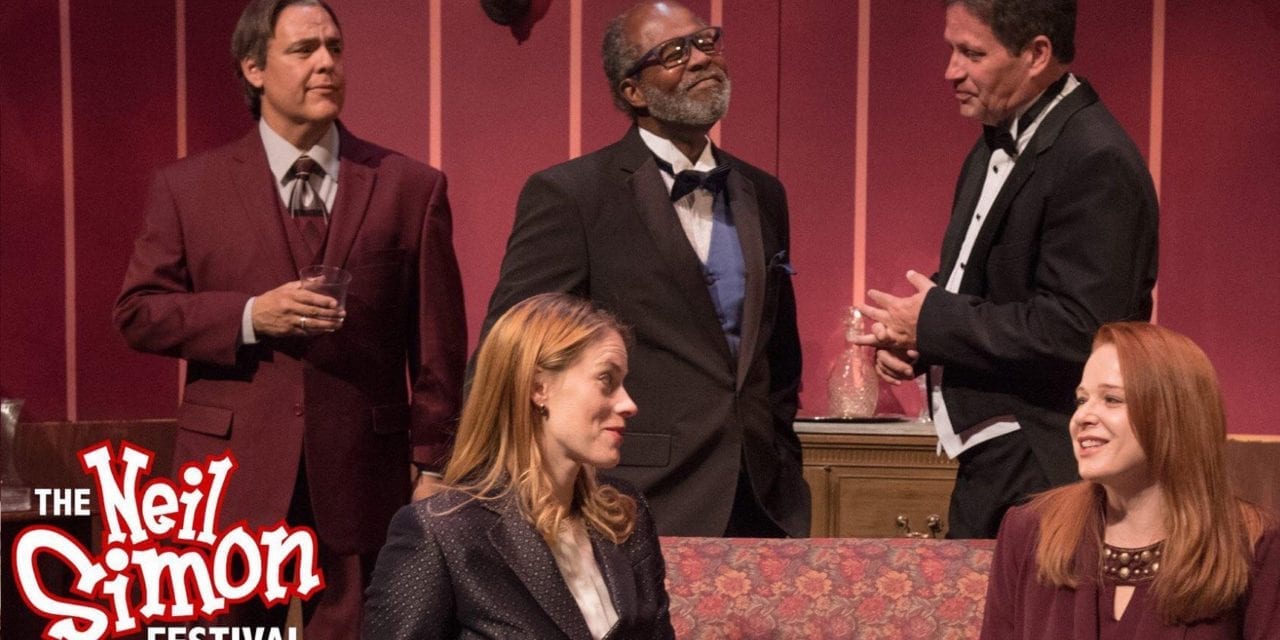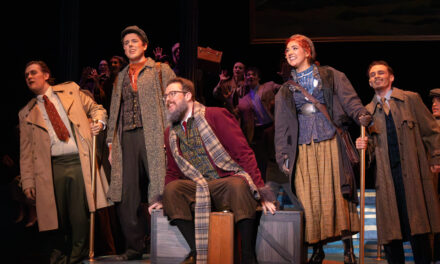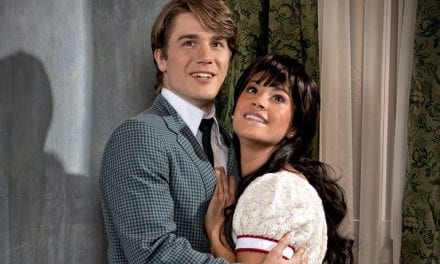CEDAR CITY — There are some subjects that do not initially suggest themselves as subjects for a comedy. Fairly high on this list is the topic of divorce. As a basis for drama, there are numerous examples of divorce fueling the impetus for a play, but comedy has fewer examples. How exactly do you approach divorce as a subject for comedy? In the case of Neil Simon’s The Dinner Party, the answer is deft skill and very witty dialogue.

Show closes August 12, 2017.
The setting is a private dining room in a first-rate restaurant in Paris. A dinner party is set for six guests who arrive individually, and attempt to divulge how they relate to each other and why they have been invited. I have always enjoyed Neil Simon shows because the dialogue between characters seems so natural and organic. And The Dinner Party does not disappoint in that regard. The dialogue flows and the conversation feels natural to the situation, or as natural as it can under the circumstances. There is a bit of discomfort in situation of the characters and their relationships. I don’t want to give too much away on this, as part of the fun of the show is finding out exactly how the characters relate and interact with each other in this highly charged situation.
Director Henry Ballesteros has done an excellent job of creating this world, placing his actors and letting them live the parts they portray. Many comedies suffer from a sense that the action is contrived and “directed.” Ballesteros has created a very natural style the comedy is greatly served by this structure. The performances overall were excellent. Of particular note were Kristen Sham as Yvette and Richard Bugg as Albert. Their characters proved to be the real highlights in the show. Sham delivered her lines with a quirky accent and a somewhat deadpan delivery that heightened the humor of every line. As Albert, Bugg kept the character just slightly off level, affable, but unsure which proved a great foil for the other male characters in the first half of the evening.

Photo by Carlos Ferrari.
The only actor that I didn’t quite buy into was Alyson King as Gabrielle. Her performance and delivery was excellent, but I could not get past the problem that she did not appear old enough to portray the character as described by the internal timeline in the show. That obvious disconnect in age was a little hard for me and my guest to accept on face value. The remaining cast did an admirable job, particularly with the somewhat poignant ending.
Technical details were well executed by scenic designer Randy Lawrence Seely, who created a rich and sturdy unit set, not an easy feat for a repertory company. Sound and light board opereators Marty Shurtleff and Selena Price had only very minor hiccups on one or two entrances. As I said, the whole evening was well executed.
This is the fifteenth year of the Neil Simon Festival, and based on this production, it has hit its stride. Unfortunately, it competes a bit with a more established festival nearby, and the audience on the night I attended The Dinner Party was respectable in size, but not what the quality of this production deserves. Neil Simon is a bit difficult to compete with Shakespeare, but hopefully the word is out and the Neil Simon Festival will continue to grow in popularity and audience.





